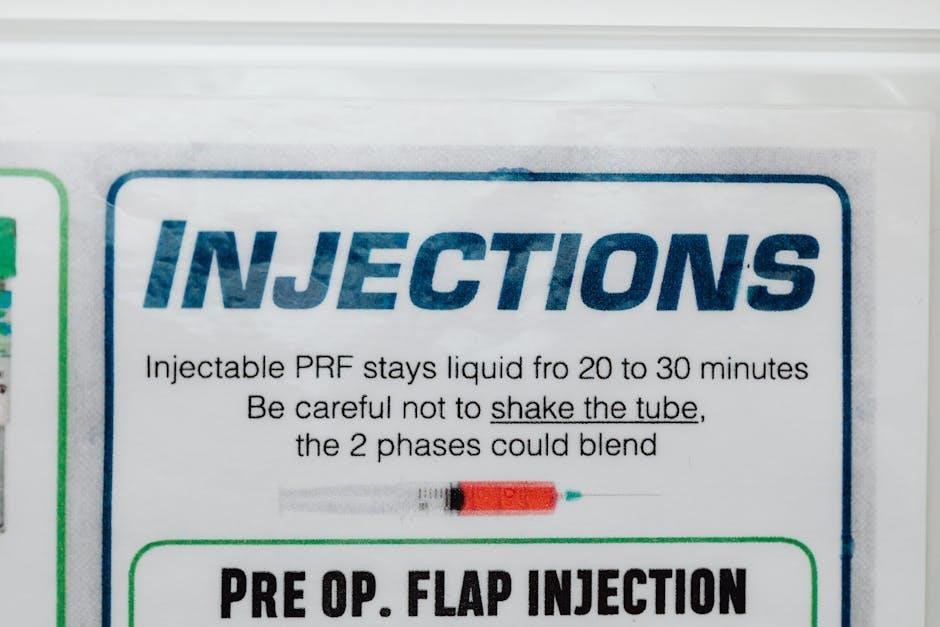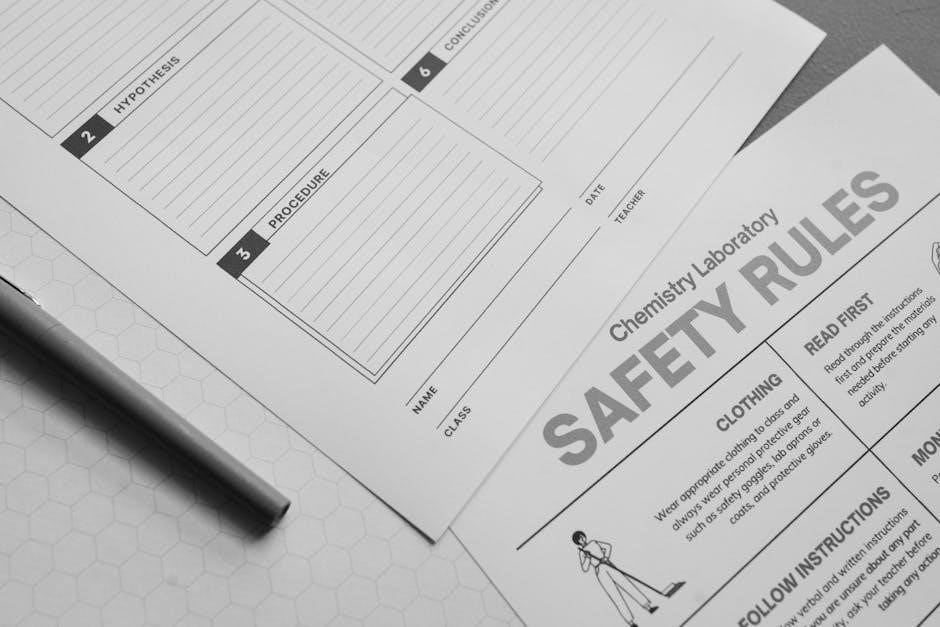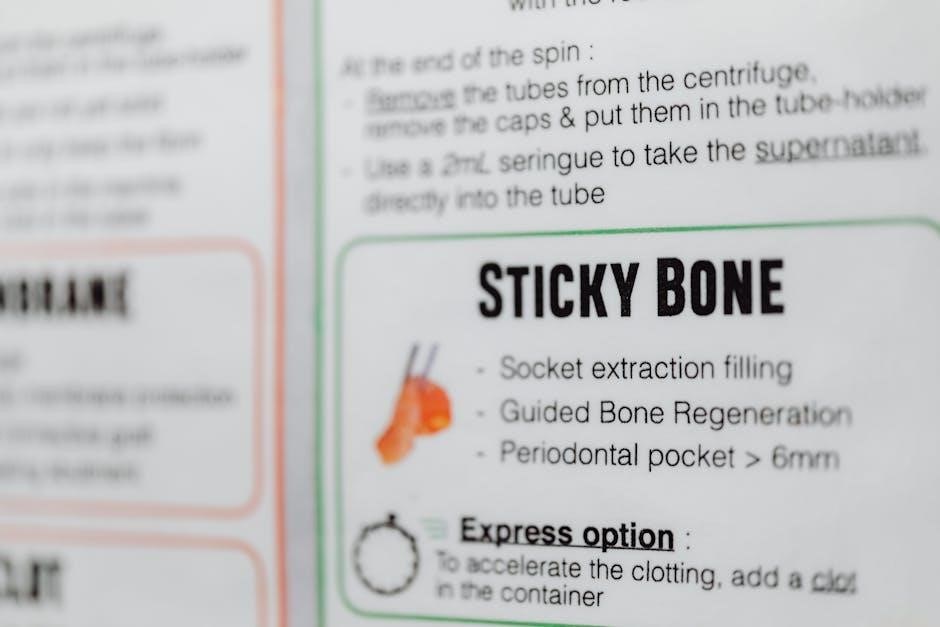Sure Jell is a popular fruit pectin used for making jams and jellies. It’s all-natural, easy to follow, and ensures a perfect set for homemade preserves. Versatile and reliable, it works with various fruits and comes with clear instructions for success.
What is Sure Jell?
Sure Jell is a popular fruit pectin used for making homemade jams, jellies, and preserves. It is an all-natural product that helps achieve the perfect set and texture in fruit-based creations. Sure Jell comes with easy-to-follow instructions and recipes, making it accessible for both beginners and experienced cooks. The product is versatile and works with a variety of fruits, ensuring consistent results. It is widely recognized for its reliability and simplicity, making it a favorite among home canners. Sure Jell is available in different forms, including powdered pectin, and offers options for traditional cooked jams as well as no-cook freezer jams. Its ability to enhance fruit flavors while providing structure makes it an essential tool for creating delicious and long-lasting preserves.
Importance of Following Instructions
Importance of Following Instructions
Following the instructions for Sure Jell is crucial to ensure your jam or jelly turns out perfectly. Properly measuring ingredients and timing the cooking process guarantees the right consistency and set. Deviating from the instructions can result in jelly that doesn’t set or becomes too runny. Additionally, failing to follow steps like bringing the mixture to a full rolling boil can prevent the pectin from activating correctly. Using the exact amount of sugar and pectin specified is also vital, as these proportions ensure the jelly sets properly and maintains its flavor. Skipping steps or substituting ingredients without guidance can lead to disappointing results. By adhering to the instructions, you avoid common issues like crystallization or mold growth, ensuring safe and delicious homemade preserves; Proper technique and timing are key to achieving professional-quality results with Sure Jell.
Basic Requirements for Making Sure Jell
Basic Requirements for Making Sure Jell
Making Sure Jell requires fresh, ripe fruit, granulated sugar, and water. The fruit must be crushed or mashed to release its natural juices and pectin. Accurate measurements are essential, as specified in the recipe, to ensure the jelly sets properly. A large pot is needed to accommodate the mixture during boiling, and utensils like a potato masher or blender are useful for preparing the fruit. Glass jars and lids must be sterilized and ready for filling. Timing is critical, as the mixture must reach a full rolling boil to activate the pectin. Following the package instructions for adding Sure Jell pectin and sugar in the correct order is vital. These basic steps ensure a smooth process and a successful outcome, avoiding common issues like undercooked or overcooked jelly.

Ingredients and Equipment
Sure Jell requires fresh fruit, granulated sugar, and water. Essential equipment includes a large pot, glass jars, and sterilized utensils. Accurate measurements ensure proper jelly formation.
List of Necessary Ingredients
For making jelly with Sure Jell, essential ingredients include 4 cups of prepared fruit juice, 7 cups of granulated sugar, 1 box of Sure Jell fruit pectin, and 1/4 cup of water. Each box of Sure Jell typically yields 8-10 cups of fruit juice, requiring precise measurements for optimal results. Fresh or frozen fruit is recommended for the best flavor and texture. Some recipes also suggest adding 1/2 tablespoon of butter to reduce foam and enhance clarity. Always follow the package instructions for exact proportions to ensure proper jelly formation. Using fresh, ripe fruit guarantees natural pectin content, crucial for setting. Avoid over-crushing fruit to maintain clarity. Optional additions like lemon juice can balance flavors. Ensure all ingredients are measured accurately before starting the cooking process. Proper ingredient ratios are vital for achieving the desired consistency and taste. Stick to the recipe for consistent results.
Required Equipment for Preparation
To prepare jelly with Sure Jell, you’ll need a large pot (8-10 quarts) for boiling, a potato masher for crushing fruit, and glass jars with lids for storage. A jar lifter is essential for safely handling hot jars. Additionally, a candy thermometer helps monitor the boiling point, ensuring the jelly reaches the proper set. A clean, sturdy workspace is crucial for organizing ingredients and equipment. Sterilize all utensils and jars before use to prevent contamination. A fine-mesh strainer is useful for extracting juice from crushed fruit. Measure cups and spoons are vital for accurate ingredient proportions. A wooden spoon or silicone spatula is ideal for stirring the mixture. Preparing these tools in advance streamlines the process, ensuring a smooth and successful jelly-making experience. Proper equipment setup is key to achieving the best results with Sure Jell. Always sanitize equipment thoroughly before starting. This ensures safety and quality in your homemade jelly.
Understanding the Role of Each Ingredient
Sure Jell’s effectiveness relies on its ingredients working harmoniously. The fruit provides natural flavor, while sugar enhances sweetness and aids in setting. Sure Jell pectin is the key thickening agent, ensuring the jelly sets properly. Lemon juice or butter can be added to improve clarity. Each component plays a vital role in achieving the perfect texture and taste.
Alternatives and Substitutions
Alternatives and Substitutions
When using Sure Jell, substitutions can be made to accommodate preferences or dietary needs. Sugar can be replaced with honey or agave syrup, though this may affect set and flavor. For low-sugar options, alternatives like stevia or monk fruit can be used, but results may vary. Butter can be omitted or swapped with oil to reduce foam. Fruit variations are also possible, allowing you to experiment with different flavors. While substitutions are flexible, it’s crucial to follow the basic instructions to ensure proper jelly formation. Always measure ingredients accurately and maintain the required proportions for best results.

Fruit Preparation
Preparing fruit involves selecting ripe, fresh options, washing thoroughly, and crushing or pureeing to release natural juices. Accurate measurements ensure proper jelly formation with Sure Jell pectin.
Selecting the Right Fruit
Selecting the Right Fruit
Selecting fresh, ripe, and suitable fruit is crucial for making delicious jelly with Sure Jell. Opt for fruits rich in natural pectin, like strawberries, raspberries, or grapes, for best results. Avoid overripe or underripe fruits, as they may lack proper flavor or pectin content. Wash fruits thoroughly to remove dirt, stems, and leaves. For berries, crush them to release juices, while for stone fruits like peaches, remove pits before processing. Ensure all fruits are ripe but firm to achieve the right texture and flavor balance. Proper fruit selection and preparation are key to creating homemade jelly that sets perfectly and tastes great. Always follow Sure Jell’s guidelines for specific fruits to guarantee success.
Washing and Cleaning the Fruit

Washing and Cleaning the Fruit
Washing and cleaning the fruit is essential before making jelly with Sure Jell. Rinse fruits under cold running water to remove dirt, pesticides, or debris. For berries, gently swish them in a bowl of water to loosen impurities, then drain thoroughly. Remove stems, leaves, or pits, as these can interfere with the jelly’s texture and flavor. Soft fruits like strawberries can be cleaned with a vegetable brush to remove dirt without damaging them. Avoid soaking fruits for too long, as this may cause them to lose natural pectin and flavor. After washing, pat fruits dry with a clean cloth or paper towels to prevent excess moisture. Clean equipment and workspace beforehand to ensure a sanitary environment for preparation. Proper cleaning ensures the fruit is ready for crushing or cooking, a crucial step for achieving the best results with Sure Jell.

Crushing and Measuring Fruit
Crushing and Measuring Fruit
Crushing and measuring fruit is a critical step when using Sure Jell. For most recipes, fruits like strawberries or raspberries should be crushed using a potato masher or food processor until they reach the desired consistency. Avoid over-crushing, as this can release excess juice and natural pectin, affecting the jelly’s texture. Once crushed, measure the fruit precisely, typically 5 cups for standard recipes, to ensure the proper balance with sugar and pectin. Use a clean, dry measuring cup to avoid moisture interference. For fruits with pits or seeds, such as raspberries, strain the mixture to remove unwanted particles. Accurate measurement is essential for the jelly to set properly. Crushing and measuring should be done just before cooking to preserve freshness and flavor. This step ensures the fruit is prepared correctly for combining with Sure Jell and other ingredients.
Special Tips for Fruit Preparation
Special Tips for Fruit Preparation
For optimal results with Sure Jell, ensure fruits are ripe for the best flavor and natural pectin content. Crush fruit just before cooking to preserve freshness and avoid oxidation. Use a potato masher or food processor for even consistency, but avoid over-crushing, which can release excess juice and dilute the mixture. For seeded fruits like raspberries or blackberries, strain the pulp to remove seeds for a smoother jelly; Add a tablespoon of butter to reduce foaming during cooking, ensuring clearer jelly. If using citrus fruits, include the zest for enhanced flavor but avoid bitter white pith. For softer fruits like strawberries, mash gently to retain texture. Always measure fruit after crushing to meet recipe requirements precisely. These tips ensure a balanced flavor and proper set when preparing fruit for Sure Jell recipes. Proper preparation enhances both texture and taste in homemade jams and jellies.

Cooking Process
Combine prepared fruit, sugar, and Sure Jell in a large pot. Bring to a rolling boil, stirring constantly. Add pectin, boil for one minute, then remove from heat.
Combining Ingredients
Combining Ingredients
To start, crush your chosen fruit thoroughly and measure out the required amount; Add water to the pot, cover, and simmer for 10 minutes, crushing the fruit again if needed. Strain the mixture to obtain the precise measurement of fruit juice. Next, add the measured sugar and butter (if using) to the pot. Stir well to combine. Open the Sure Jell package and pour the pectin into the pot, ensuring it’s evenly distributed. Bring the mixture to a full, rolling boil over high heat, stirring constantly to prevent scorching. The order of combining ingredients is crucial for proper gelling. Always follow the sequence outlined in the instructions to ensure the pectin activates correctly. This step sets the foundation for a smooth, even texture in your final jelly or jam.
Bringing to a Rolling Boil
Bringing to a Rolling Boil
Once all ingredients are combined, place the pot over high heat and stir constantly to prevent scorching. A rolling boil is essential—this means the mixture should boil vigorously, unable to be stirred down. Achieve this by gradually increasing the heat and monitoring the mixture closely. Once the boil begins, add the Sure Jell pectin mixture (if using) and continue stirring. Allow the mixture to reach a full, rolling boil for exactly one minute, as specified in the instructions. This step is critical for activating the pectin and ensuring proper gelling. Do not skip or shorten this process, as it directly impacts the final texture of your jelly or jam. After the boiling period, remove the pot from the heat to proceed with filling jars.
Adding Sure Jell Pectin
Adding Sure Jell Pectin
Once the fruit mixture reaches a rolling boil, slowly stir in the Sure Jell pectin. Ensure the pectin is added gradually to avoid clumping and uneven distribution. Use the entire contents of the package, as partial use may result in improper gelling. Stir continuously for about one minute to fully incorporate the pectin into the mixture. Timing is crucial—add the pectin only after achieving a full boil, as premature addition can reduce its effectiveness. Avoid delaying the process once the pectin is opened, as it can lose its potency. Properly mixing the pectin ensures the jelly sets correctly, creating a smooth, firm texture. If the pectin isn’t added correctly, the jelly may remain runny or separate, so follow the instructions precisely for the best results.
Timing and Stirring Techniques
Timing and Stirring Techniques
Timing and stirring are critical when making jelly with Sure Jell. Once the mixture reaches a rolling boil, add the pectin gradually, stirring constantly to prevent clumping. Use a timer to ensure the boil is maintained for exactly one minute after adding the pectin. Stirring continuously helps dissolve the pectin evenly and prevents scorching. After the minute is up, remove the pot from the heat and let it cool slightly before ladling into jars. Overstirring or delaying the process can affect the jelly’s texture. Proper timing ensures the pectin activates fully, leading to a firm, clear set. Always follow the package instructions for precise timing to achieve the best results. Consistent stirring and accurate timing are key to making smooth, professional-quality jelly at home.

Canning and Preservation
Properly sterilize jars and lids in boiling water. Fill jars with hot jelly, leaving 1/4-inch headspace. Seal tightly and let cool. Store sealed jars in a cool, dark place.
Preparing Jars and Lids
Preparing Jars and Lids
Before canning, wash jars and lids in hot soapy water, then rinse thoroughly. Sterilize jars and lids by submerging them in boiling water for 10 minutes. Use a clean utensil to handle sterilized jars. Place lids in a separate pot of boiling water for 5 minutes to soften the seal. Remove jars and lids with tongs and place them on a clean, dry cloth. Ensure all surfaces are clean to prevent contamination. Jars should be hot when filling to avoid thermal shock. Use new, unused lids for each canning session to ensure a proper seal. Prepare jars and lids just before filling to maintain sterility. This step is crucial for safe preservation and preventing spoilage. Always follow the manufacturer’s guidelines for sterilization to ensure success.
Filling Jars Properly

Ladle the hot jelly mixture into prepared, sterilized jars, leaving about 1/4 inch of headspace at the top. Use a clean, non-metallic utensil, like a plastic spatula, to remove any air bubbles by gently running it around the inside of the jar. Wipe the rim with a clean, damp cloth to ensure no residue is left, which could prevent a proper seal. Place the sterilized lid and screw band on the jar, tightening it just until resistance is met—do not overtighten. Repeat for all jars, working quickly to fill while the jelly is still hot. After filling, allow jars to cool slightly before moving them to a safe place to set. Proper filling ensures a vacuum seal forms during cooling, preserving the jelly and preventing spoilage. Always follow the specific guidelines for filling to achieve the best results.
Storing the Sealed Jars
After filling and sealing the jars, allow them to cool undisturbed for 12 to 24 hours. This ensures the seals set properly. Once cooled, check each jar by pressing on the top of the lid; it should not move or show any give. Store the sealed jars in a cool, dark, dry place, such as a pantry or cupboard. Avoid areas with direct sunlight or extreme temperature fluctuations. Do not stack jars on top of each other, as this could damage the seals or jars. Properly stored jars of homemade jelly or jam can last for up to one year. Once a jar is opened, it should be refrigerated and used within one month. Always inspect the jar for signs of spoilage before consumption, such as mold or an off smell. Proper storage ensures freshness and safety.

Troubleshooting Common Issues
If jelly doesn’t set, check pectin freshness and ensure proper boiling. Crystallization can occur from overcooking; stir well. Prevent mold by using sterilized jars and lids, ensuring a tight seal.
Jelly Not Setting Properly
Jelly Not Setting Properly
Jelly not setting can be frustrating, but it’s often due to common mistakes. First, check if you used the correct amount of Sure Jell pectin and sugar, as deviations can prevent proper gelling. Ensure the mixture reached a full rolling boil, as this step is crucial for activating the pectin. If the boil was interrupted or not sustained, the jelly may remain runny. Additionally, using old or expired pectin can reduce its effectiveness. To fix unset jelly, recook it by dissolving another packet of Sure Jell in a small amount of water and mixing it in; Bring the mixture to a boil again, stirring constantly, and test the set by placing a small amount on a chilled plate. If it still doesn’t set, consult the Sure Jell troubleshooting guide for further assistance.
Dealing with Crystallization
Dealing with Crystallization
Crystallization in jelly can occur when sugar particles form crystals during the cooling process. This is typically harmless but can affect the jelly’s appearance. To prevent crystallization, ensure sugar is fully dissolved during cooking by avoiding stirring after the boil stage. Using a heavy-bottomed pot and not overcooking can also help. If crystals form, the jelly is still safe to eat but may have a grainy texture. To fix this, reheat the jelly gently, stirring until crystals dissolve. Adding a small amount of water can help if the jelly is too thick. Preventing crystallization starts with proper cooking techniques and using the correct ratio of sugar to fruit as specified in Sure Jell instructions. Regular stirring during the boiling process and skimming foam can also reduce the risk of crystal formation.
Fixing Overcooked or Undercooked Jelly
Fixing Overcooked or Undercooked Jelly
If jelly is overcooked, it may become too firm or rubbery. To fix this, dissolve 1-2 tablespoons of water in a saucepan, add the overcooked jelly, and stir over low heat until softened. For undercooked jelly that’s too runny, combine 1 tablespoon Sure Jell with 1 tablespoon sugar, add to the jelly, and bring to a rolling boil for 1-2 minutes. Test consistency by placing a small amount on a chilled plate; it should set within a few minutes. If jelly doesn’t set after re-cooking, start over with a new packet of Sure Jell. Always follow the original recipe’s measurements and instructions for best results. Proper cooking time and temperature are crucial to achieving the perfect texture. Keep in mind that altitude and fruit ripeness can affect set, so adjust cooking time as needed for your environment.
Preventing Mold Growth
Preventing Mold Growth
Preventing mold growth in homemade jelly requires strict adherence to sterilization and sealing practices. Always use clean, sterilized jars, lids, and utensils to avoid contamination. Wash jars and lids with hot soapy water, then sterilize them in boiling water for 10-15 minutes. Ensure jars are completely sealed by using new lids each time, as old lids may not create a tight seal. Store sealed jars in a cool, dark place to inhibit mold development; Never store jars in direct sunlight or warm environments. Regularly inspect stored jars for signs of mold or spoilage, and discard any jar showing mold immediately. Following Sure Jell’s tested recipes and guidelines helps maintain the right acidity and sugar levels, which are critical for preventing mold growth. Proper canning techniques ensure your jelly remains fresh and mold-free for a longer period.

Additional Tips and Variations
Add butter for clarity, experiment with spices, or try different fruits. Incorporate unique flavors like citrus zest or cinnamon for variety. Freezer jam offers a no-cook alternative option.
Adding Butter for Clarity
Adding Butter for Clarity
Adding a small amount of butter to your Sure Jell mixture can enhance clarity and reduce foam formation. This step is optional but recommended for a smoother texture and clearer appearance.
The butter helps in minimizing the froth that rises during boiling, ensuring a more transparent jelly. Simply add 1/2 tablespoon of butter after bringing the mixture to a rolling boil.
It’s important to note that the butter doesn’t affect the setting process but improves the visual appeal. For the best results, use high-quality, unsalted butter to avoid altering the flavor profile.
This tip is especially useful for novice cooks aiming for professional-looking preserves. Experiment with different butter types, like browned butter, for a unique twist in flavor and texture.
Using Different Types of Fruit
Using Different Types of Fruit
Sure Jell can be used with a variety of fruits to create delicious and unique jams or jellies. Popular choices include strawberries, grapes, raspberries, and blackberries. Each fruit offers a distinct flavor and texture, allowing for creativity in your recipes.
When experimenting with different fruits, ensure they are ripe and properly prepared. For example, strawberries should be crushed, while grapes may require cooking to extract their juice. Raspberries and blackberries are naturally tart, making them ideal for balancing sweetness.
Combining fruits can also yield exciting results. Try mixing berries for a complex flavor profile or blending citrus zest with strawberries for added brightness. Always follow the specific preparation instructions for each fruit to achieve the best results with Sure Jell;
Remember to measure the fruit accurately, as specified in the recipe, to ensure proper setting. This versatility makes Sure Jell a go-to for crafting personalized preserves.
Incorporating Spices and Flavors
Incorporating Spices and Flavors
Incorporating spices and unique flavors into your Sure Jell recipes can elevate your jams and jellies to new heights. Common additions include cinnamon, nutmeg, or citrus zest, which add warmth and depth to the fruit flavors. For example, a pinch of cinnamon pairs beautifully with apple or grape jelly, while a squeeze of fresh lime juice can brighten the flavor of strawberry preserves.
When adding spices, introduce them during the cooking process to allow the flavors to meld. For instance, simmer cinnamon sticks in the fruit mixture or stir in grated ginger for a spicy kick. Experiment with combinations like mint and lemon or cloves and orange for unique twists.
Remember to taste as you go and adjust seasoning to your liking. Start with small amounts to avoid overpowering the fruit. This creative approach ensures your homemade preserves are both delicious and distinctive.
Freezer Jam and No-Cook Options
Freezer Jam and No-Cook Options
Freezer jam and no-cook options are perfect for those who prefer a quicker, simpler process without canning. Sure Jell offers specific instructions for these methods, allowing you to enjoy fresh-tasting jam year-round. For freezer jam, mix crushed fruit, sugar, and Sure Jell in a bowl, stirring until the sugar dissolves. Let it set at room temperature or in the fridge before transferring to airtight containers and freezing.
No-cook recipes skip the stove entirely, relying on the pectin to thicken naturally. This method preserves the fruit’s vibrant flavor and texture. Simply combine fresh fruit, sugar, and Sure Jell, then store in the freezer or fridge. These options are ideal for beginners or those short on time, offering a delicious homemade jam with minimal effort. Always follow Sure Jell’s guidelines for best results.
